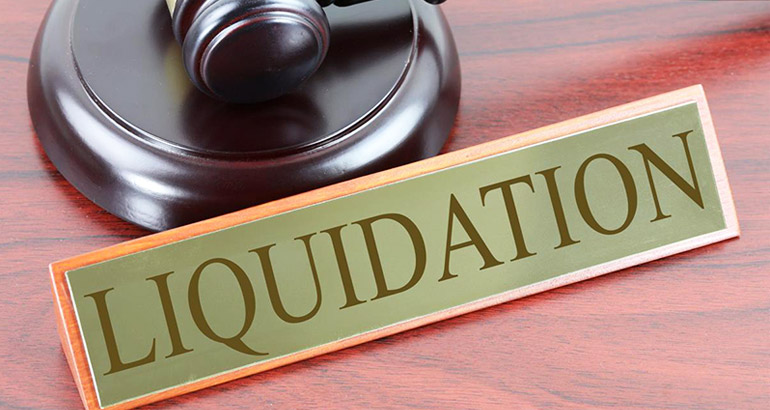The 10-Minute Rule for Company Liquidation
The 10-Minute Rule for Company Liquidation
Blog Article
The Basic Principles Of Company Liquidation
Table of ContentsNot known Factual Statements About Company Liquidation Little Known Questions About Company Liquidation.How Company Liquidation can Save You Time, Stress, and Money.Company Liquidation - An OverviewTop Guidelines Of Company Liquidation
A liquidator is especially assigned to look after the ending up of a firm's events in order for it to be folded typically when the company is going insolvent. The liquidator is an unbiased 3rd party that supervises the sale of company assets in order to repay any kind of impressive financial debts.Their duty consists of, however is not limited to: Neutral Movie director: A liquidator is entrusted with functioning as an objective 3rd party to look after the whole business liquidation process. Create Declaration of Affairs: Liquidators should create a thorough declaration of events document. This document is dispersed to lenders, detailing the existing economic standing of the service at the time of its liquidation.
After the liquidation of a company, its presence is removed from Companies Residence and it discontinues to be a legal entity. If supervisors navigated the procedure uncreative, there would be no penalties or individual obligation for strong financial obligations expected. Currently, with a clean slate, directors can check out brand-new company possibilities, though specialist appointment is a good idea.
Unknown Facts About Company Liquidation
If even more than 90% of all firm investors agree, liquidation can take area on brief notification within 7 days, the minimal legal notice for lenders. Normally, the bigger the liquidation and the more assets and capital the service has, the longer the procedure will take.

We comprehend that no two firms coincide, which is why we will certainly put in the time to be familiar with your service so we can recommend the most effective strategy for you. We only operate in your benefits, so you can be absolutely certain in the service we supply.
Some Known Facts About Company Liquidation.
In the UK, there is an established description procedure to shutting down or restructuring a limited firm, whether it is solvent or insolvent. This process is known as liquidation and can just be handled by a licensed insolvency expert (IP) according to the Insolvency Act 1986. There are 4 major types of company liquidation process: Creditors' Volunteer Liquidation (CVL); Obligatory liquidation; Management; and Participants' Volunteer Liquidation (MVL).

In these situations, it is essential that the company ceases trading; if business proceeds to trade, the supervisors could be held directly accountable and it might lead to the bankruptcy expert have a peek here reporting wrongful trading, referred to as misfeasance, which may result in lawsuit. The directors select an insolvency practitioner and as soon as this has actually been agreed and verified, there is a conference with the investors.
Naturally, if there are no shareholders, this step of the procedure is not needed (Company Liquidation). The IP takes control of the firm and starts the company liquidation procedure. The supervisors are no more included in what takes place, consisting of the sale of the business's assets. If the supervisors want any of the assets, they can inform the IP.
Company Liquidation Fundamentals Explained
The primary difference is that the company's creditors put on the court for an ending up order which requires the insolvent firm into a liquidation process. For the most part, financial institutions take this activity as a last resource because they haven't received settlement with other kinds of settlement. The court appoints a bankruptcy professional, likewise called a main receiver, to conduct the required firm liquidation process.
This sort of company liquidation is not voluntary and supervisors' conduct is reported to the UK's Secretary of State once the liquidation try these out procedure has actually been finished. Consequently, any kind of director that fails to accept the IP or has been associated with director misbehavior, or an illegal act, might cause major effects (Company Liquidation).
It is utilized as a way to safeguard the business from any kind of legal action by its financial institutions. The supervisors of the firm agree to make routine repayments to resolve their debts over a period of time. The appointed administrator handles the volunteer management procedure, and receives the settlements which they after that distribute to lenders according to the agreed quantities.
See This Report on Company Liquidation
This provides the company with time to create a strategy moving forward to rescue the business and avoid liquidation. Nevertheless, at this point, supervisors hand control of the firm over to the selected administrator. If a firm is solvent however the directors and shareholders intend to close the company, a Participants Volunteer Liquidation is the right choice.
The company liquidation procedure is handled by a liquidator appointed by the directors and shareholders of the firm and they should sign an affirmation that there are no lenders staying. The liquidation process for an MVL is comparable to that of a CVL because assets are understood yet the profits are dispersed to the directors and the investors of the company after the liquidator's costs have been paid.
Report this page